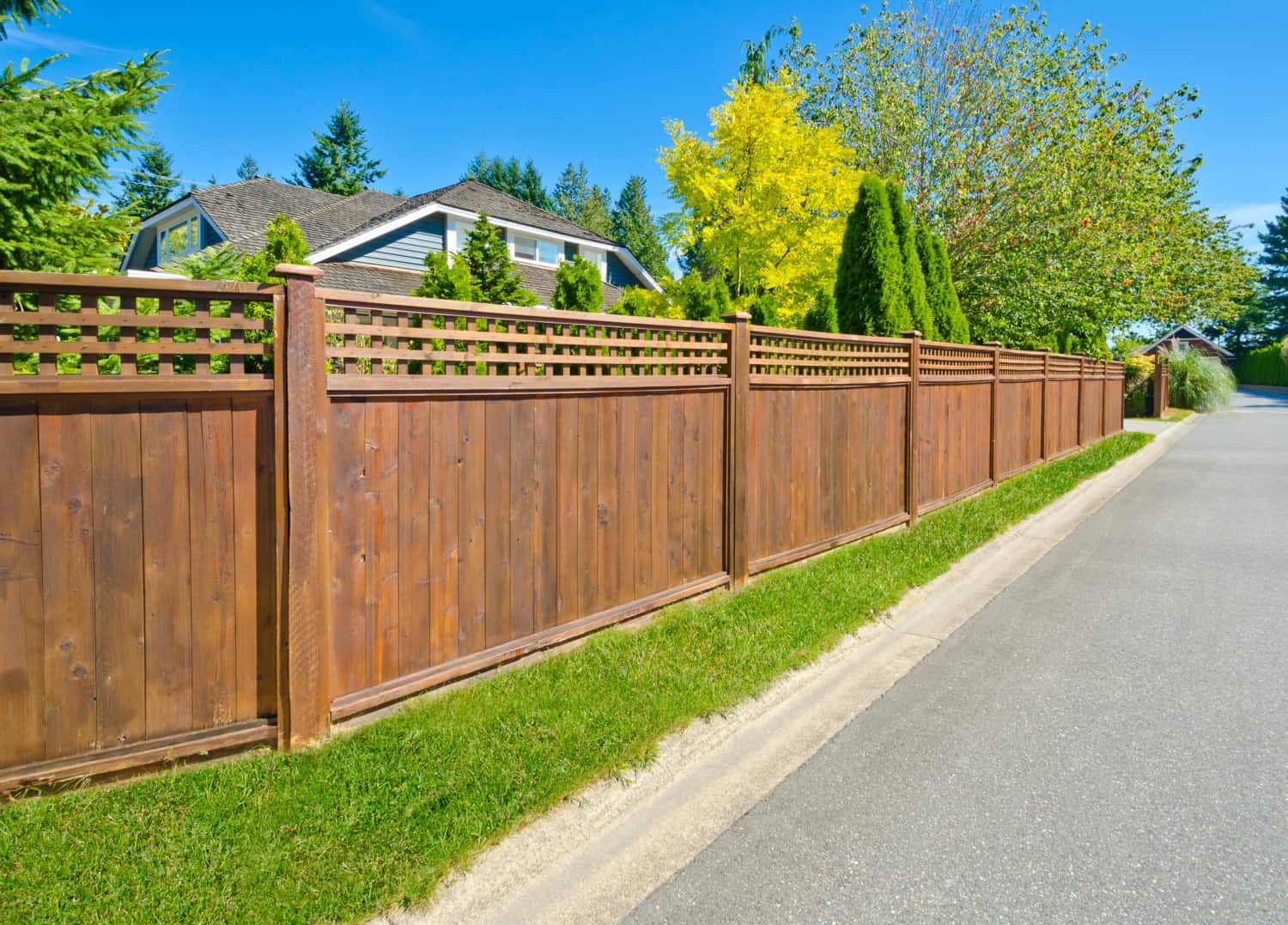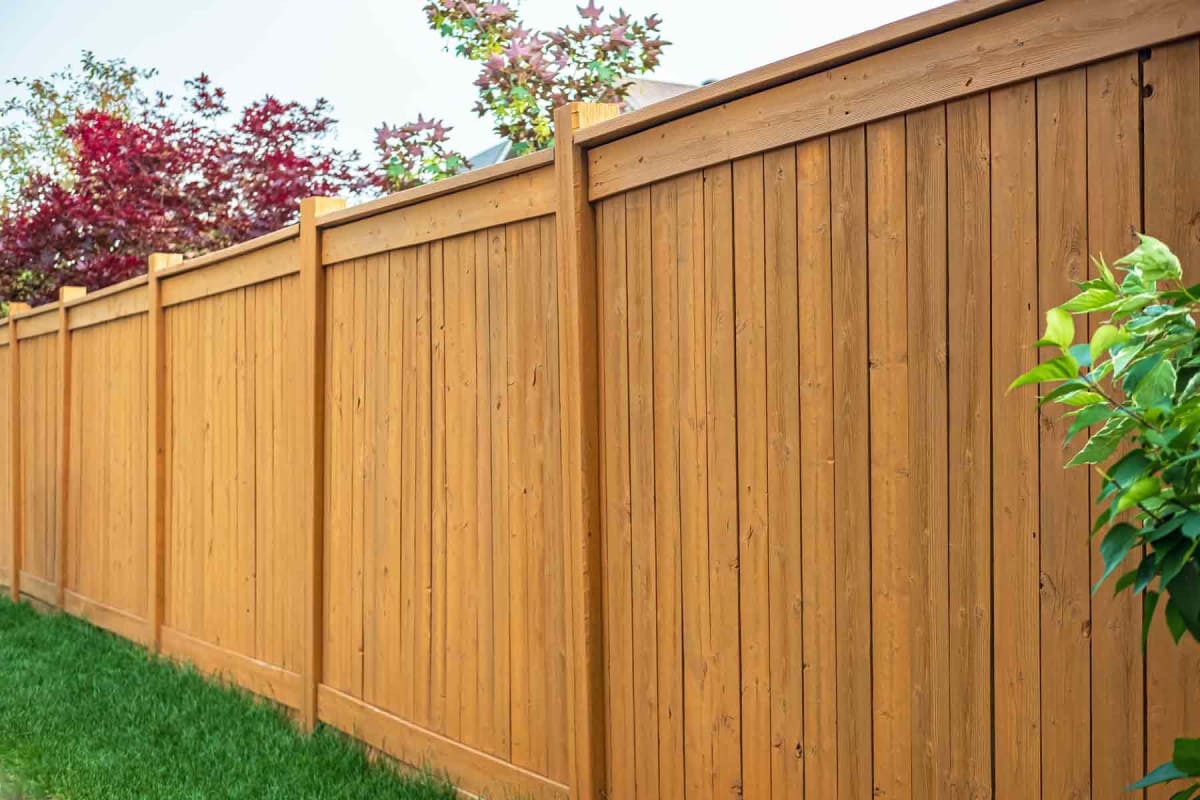All Categories
Featured
When it pertains to preserving a wooden fencing, homeowners often deal with the decision of whether to paint or discolor. Both options have their cons and pros, and the option eventually depends on your aesthetic choices, the type of wood, and just how much upkeep you want to dedicate to. Right here's a detailed contrast to aid you make an informed decision.
The Essentials of Paint and Discoloration
Painting involves covering the timber with an opaque layer of color. It provides complete insurance coverage, concealing the timber grain while supplying superb security against ecological elements.
Tarnishing permeates the wood, enhancing its natural charm while adding a protective layer. Depending upon the kind, spots can vary from transparent to solid, allowing varying degrees of wood grain visibility.
Benefits And Drawbacks of Paint
Pros:
Large Range of Color styles: Repaint offers unlimited color alternatives, allowing you to match your fencing to your home's exterior or personal design.
Longer Long-term: High-quality outside paint can last as much as 5-7 years, calling for much less constant reapplication.
Superior Security: Repaint kinds a thick, strong obstacle against dampness, UV rays, and parasites.
Disadvantages:
Splitting and peeling: In time, paint can crack or peel off, especially in areas with severe weather.
Hides Natural Timber Charm: If you love the all-natural grain of timber, paint may not be the very best choice.
Greater Upkeep: Repainting needs scraping off the old paint, which can be labor-intensive.
![]()
Pros and Disadvantages of Discoloration
Pros:
Natural Look: Spots protect and enhance the natural beauty of the wood, making it excellent for top notch hardwood like cedar or redwood.
Easier to Reapply: Unlike paint, spots do not peel off or break. Reapplying stain typically needs much less surface prep work.
Flexible Complete Choices: Spots been available in transparent, semi-transparent, and strong varieties, offering different levels of insurance coverage.
Cons:
![]()
Much Shorter Lifespan: Stains, semi-transparent and especially clear ones, may require reapplication every 2-3 years.
Minimal Shade Alternatives: While stains provide all-natural tones, they do not have the broad color scheme available with paint.
Much Less Protective: Stains permeate the timber but do not offer as thick an obstacle as paint, making them somewhat much less protective versus severe climate.
Aspects to Take Into Consideration
Visual Preferences: If you desire lively colors and full insurance coverage, paint is the way to go. For a rustic and natural appearance, choose for tarnish.
Timber Type: High-grade timbers with beautiful grains gain from staining, while lower-grade timbers can be painted for a polished look.
![]()
Climate: In wet or moist climates, paint's thicker barrier might use better security. In completely dry or moderate environments, spots can be sufficient.
Maintenance Dedication: Paint entails much less frequent reapplication however more initiative during touch-ups. Discoloration needs normal maintenance but is simpler to take care of.
Final Thoughts
Both painting and staining can properly shield and beautify your wooden fencing. The most effective option depends on your top priorities, whether they lean toward aesthetics, toughness, or convenience of maintenance. By comprehending the advantages and drawbacks of each, you can pick the finish that lines up with your demands and ensures your fencing continues to be a standout function of your residential property for several years to come.
The Essentials of Paint and Discoloration
Painting involves covering the timber with an opaque layer of color. It provides complete insurance coverage, concealing the timber grain while supplying superb security against ecological elements.
Tarnishing permeates the wood, enhancing its natural charm while adding a protective layer. Depending upon the kind, spots can vary from transparent to solid, allowing varying degrees of wood grain visibility.
Benefits And Drawbacks of Paint
Pros:
Large Range of Color styles: Repaint offers unlimited color alternatives, allowing you to match your fencing to your home's exterior or personal design.
Longer Long-term: High-quality outside paint can last as much as 5-7 years, calling for much less constant reapplication.
Superior Security: Repaint kinds a thick, strong obstacle against dampness, UV rays, and parasites.
Disadvantages:
Splitting and peeling: In time, paint can crack or peel off, especially in areas with severe weather.
Hides Natural Timber Charm: If you love the all-natural grain of timber, paint may not be the very best choice.
Greater Upkeep: Repainting needs scraping off the old paint, which can be labor-intensive.

Pros and Disadvantages of Discoloration
Pros:
Natural Look: Spots protect and enhance the natural beauty of the wood, making it excellent for top notch hardwood like cedar or redwood.
Easier to Reapply: Unlike paint, spots do not peel off or break. Reapplying stain typically needs much less surface prep work.
Flexible Complete Choices: Spots been available in transparent, semi-transparent, and strong varieties, offering different levels of insurance coverage.
Cons:

Much Shorter Lifespan: Stains, semi-transparent and especially clear ones, may require reapplication every 2-3 years.
Minimal Shade Alternatives: While stains provide all-natural tones, they do not have the broad color scheme available with paint.
Much Less Protective: Stains permeate the timber but do not offer as thick an obstacle as paint, making them somewhat much less protective versus severe climate.
Aspects to Take Into Consideration
Visual Preferences: If you desire lively colors and full insurance coverage, paint is the way to go. For a rustic and natural appearance, choose for tarnish.
Timber Type: High-grade timbers with beautiful grains gain from staining, while lower-grade timbers can be painted for a polished look.

Climate: In wet or moist climates, paint's thicker barrier might use better security. In completely dry or moderate environments, spots can be sufficient.
Maintenance Dedication: Paint entails much less frequent reapplication however more initiative during touch-ups. Discoloration needs normal maintenance but is simpler to take care of.
Final Thoughts
Both painting and staining can properly shield and beautify your wooden fencing. The most effective option depends on your top priorities, whether they lean toward aesthetics, toughness, or convenience of maintenance. By comprehending the advantages and drawbacks of each, you can pick the finish that lines up with your demands and ensures your fencing continues to be a standout function of your residential property for several years to come.
Latest Posts
Discover Exclusive Auto Repair Specials in Chicago at Montclare Auto Repair
Published May 27, 25
1 min read
Uncover Reduce Expenses on Car Maintenance with Montclare Auto Repair’s Limited-Time Deals
Published May 27, 25
1 min read
How Regular Vehicle Maintenance at Montclare Auto Repair Saves You Money
Published May 26, 25
1 min read
More
Latest Posts
Discover Exclusive Auto Repair Specials in Chicago at Montclare Auto Repair
Published May 27, 25
1 min read
Uncover Reduce Expenses on Car Maintenance with Montclare Auto Repair’s Limited-Time Deals
Published May 27, 25
1 min read
How Regular Vehicle Maintenance at Montclare Auto Repair Saves You Money
Published May 26, 25
1 min read